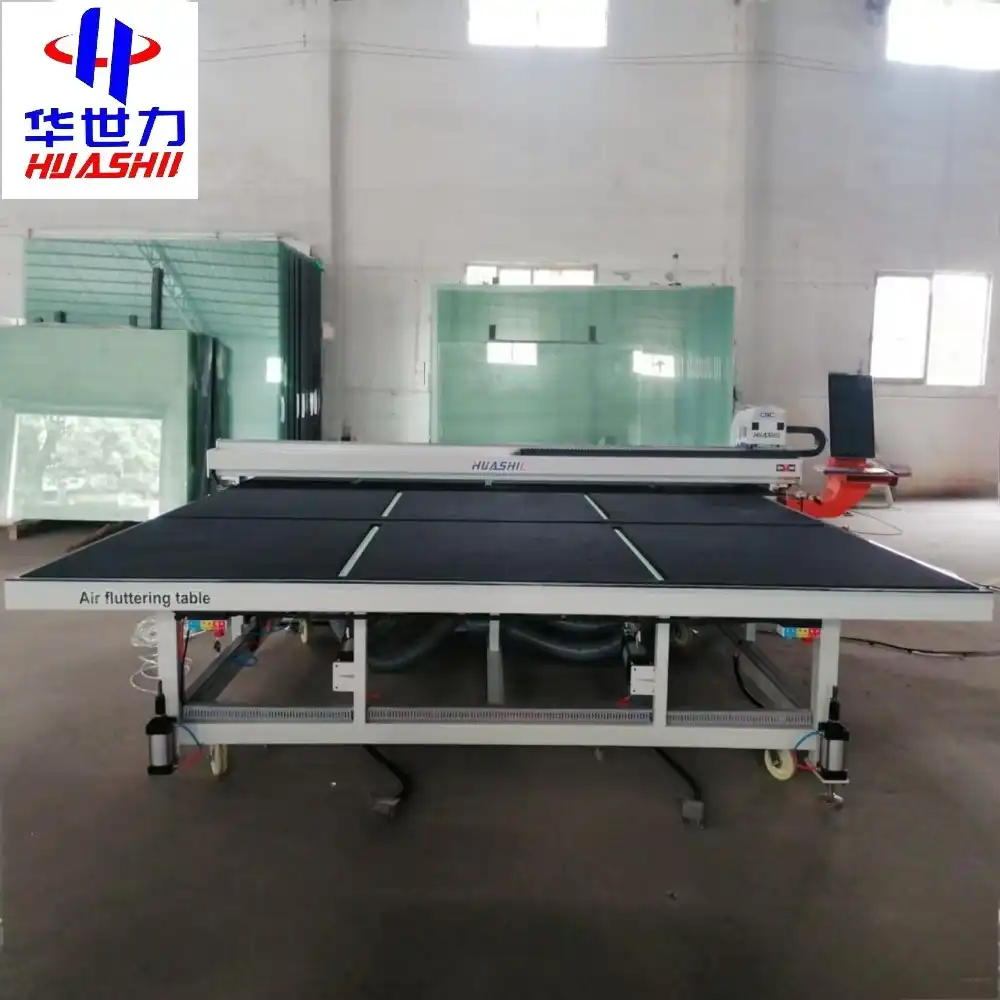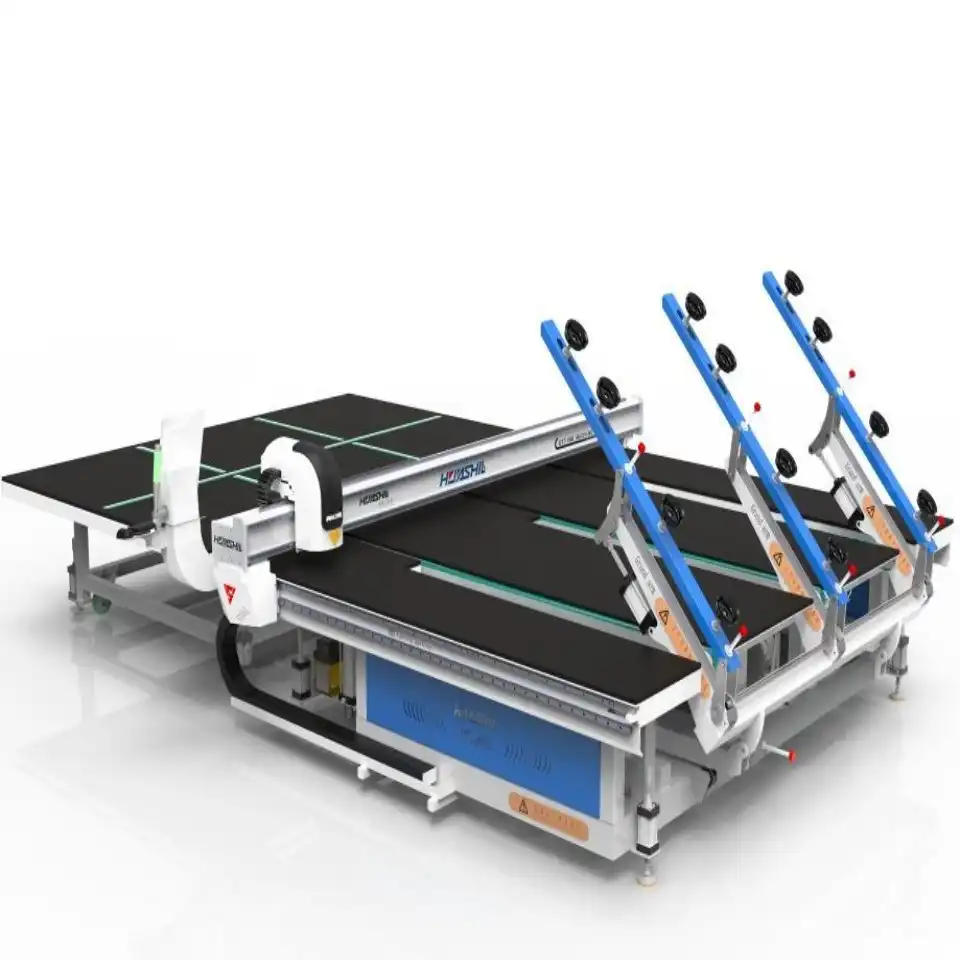In the ever-evolving world of glass processing and manufacturing, businesses continuously seek efficient solutions for handling glass materials. The question of whether a manual glass loading machine can effectively manage heavy-duty glass loading is critical for manufacturers, fabricators, and industry professionals seeking optimal productivity and safety. This comprehensive exploration delves into the intricacies of manual glass loading machines, their capabilities, limitations, and strategic applications in demanding industrial environments.
Can Manual Glass Loading Machines Handle Different Glass Weights and Sizes?
What Determines the Load Capacity of a Manual Glass Loading Machine?
Manual glass loading machines are sophisticated pieces of equipment designed to facilitate precise glass handling. The load capacity of these machines is fundamentally determined by several critical factors. First, the structural integrity of the machine's frame plays a pivotal role in supporting substantial glass weights. Engineers meticulously design these machines using high-strength materials like reinforced steel and aluminum alloys, ensuring they can withstand significant mechanical stress during glass transportation.

The machine's lifting mechanism represents another crucial component influencing load capacity. Advanced manual glass loading machines incorporate robust suction cup systems or specialized gripping technologies that distribute weight evenly. These mechanisms typically feature adjustable pressure settings, allowing operators to customize grip strength based on specific glass characteristics such as thickness, weight, and surface texture. Precision-engineered vacuum pumps and pneumatic systems enable smooth, controlled movement, minimizing the risk of glass breakage during loading and unloading processes.
Moreover, ergonomic considerations significantly impact a manual glass loading machine's performance. Manufacturers integrate sophisticated weight distribution principles and counterbalance technologies to reduce operator strain while maintaining optimal loading efficiency. This approach ensures that even when handling heavy glass panels, the machine's design mitigates physical exertion and potential workplace injuries.
How Do Operators Ensure Safe Loading of Heavy Glass Panels?
Safety represents a paramount concern in manual glass loading operations. Operators must undergo comprehensive training to master the intricacies of glass handling equipment. Modern manual glass loading machines incorporate multiple safety features, including emergency stop mechanisms, load sensors, and stability monitoring systems. These technologies provide real-time feedback, alerting operators to potential risks before they escalate.
The operator's skill set becomes instrumental in successful glass loading. Comprehensive training programs emphasize precise movements, understanding machine capabilities, and recognizing potential hazards. Manufacturers often develop specialized certification courses that cover theoretical knowledge and practical techniques for operating manual glass loading machines effectively.
Protective equipment also plays a critical role in ensuring operator safety. Specialized gloves with enhanced grip, safety glasses, and reinforced footwear complement the machine's safety features. These additional protective measures create a comprehensive safety ecosystem that minimizes accidents and promotes confident glass handling.
What Technological Innovations Enhance Manual Glass Loading Machine Performance?
Technological advancements have dramatically transformed manual glass loading machines in recent years. Integrated digital interfaces now provide operators with real-time data about load distribution, machine status, and potential mechanical anomalies. Sensors embedded within the machine's structure continuously monitor critical parameters, enabling predictive maintenance and reducing unexpected downtime.
Some cutting-edge manual glass loading machines now incorporate lightweight yet durable composite materials, significantly reducing overall machine weight while maintaining exceptional strength. Hybrid designs combine manual operation with semi-automated features, offering flexibility across various industrial applications. These innovations demonstrate the ongoing evolution of glass handling technology, bridging traditional manual techniques with modern engineering principles.
What Factors Influence the Selection of a Manual Glass Loading Machine?
How Do Industry Requirements Impact Machine Selection?
Industry-specific requirements play a crucial role in determining the most suitable manual glass loading machine. Different sectors, such as architectural glass manufacturing, automotive glass production, and solar panel fabrication, present unique challenges that demand specialized equipment. Manufacturers must carefully evaluate factors like panel dimensions, material composition, and production volume when selecting an appropriate loading solution.
The architectural glass industry, for instance, frequently requires handling large, intricate panels with varying thicknesses. Manual glass loading machines designed for this sector incorporate adjustable gripping mechanisms and enhanced maneuverability. Conversely, automotive glass production might prioritize rapid loading capabilities and precision alignment, necessitating machines with faster cycle times and more compact designs.
Customization has become a hallmark of modern manual glass loading machines. Manufacturers now offer modular designs that can be tailored to specific industrial requirements. This approach allows businesses to invest in equipment that precisely matches their operational needs, optimizing both performance and cost-effectiveness.
What Economic Considerations Influence Machine Investment?
Economic considerations represent a critical aspect of manual glass loading machine selection. While initial investment costs are significant, businesses must evaluate long-term operational expenses, maintenance requirements, and potential productivity gains. A well-designed manual glass loading machine can offer substantial return on investment by reducing labor costs, minimizing glass breakage, and improving overall production efficiency.
Comparative analysis between manual and fully automated systems reveals nuanced economic implications. Manual glass loading machines often provide a more accessible entry point for small to medium-sized enterprises, offering advanced capabilities without the substantial capital expenditure associated with fully automated solutions. The flexibility and lower initial investment make these machines attractive for businesses seeking incremental technological upgrades.
How Do Maintenance Strategies Impact Machine Longevity?
Proactive maintenance strategies are essential for maximizing the performance and longevity of manual glass loading machines. Regular inspection routines, comprehensive lubrication protocols, and systematic component replacement help prevent unexpected mechanical failures. Manufacturers increasingly provide detailed maintenance guidelines and remote diagnostic capabilities, enabling businesses to optimize equipment performance.
Training programs focusing on routine maintenance empower operators to identify potential issues before they escalate. This approach transforms maintenance from a reactive to a proactive process, reducing overall operational costs and minimizing production interruptions. Advanced manual glass loading machines now include self-diagnostic features that provide early warning signals, facilitating timely interventions.

What Are the Future Trends in Manual Glass Loading Technology?
Emerging Technologies and Innovations
The future of manual glass loading machines appears promising, with emerging technologies poised to revolutionize glass handling processes. Artificial intelligence and machine learning algorithms are being integrated to enhance predictive maintenance, optimize loading sequences, and improve overall operational efficiency. These technological advancements suggest a gradual evolution towards more intelligent, adaptive glass loading solutions.
Sustainability considerations are increasingly influencing machine design. Manufacturers are exploring eco-friendly materials, energy-efficient components, and recyclable construction techniques. This shift reflects a broader industry trend towards reducing environmental impact while maintaining high-performance standards.
Conclusion
Manual glass loading machines represent a sophisticated, versatile solution for industries requiring precise glass handling capabilities. By combining advanced engineering, safety features, and adaptable design, these machines continue to play a crucial role in modern glass processing environments.
About the Author: Shandong Huashil Automation Technology Co., Ltd. is a leading provider of glass processing equipment and solutions, specializing in R&D, manufacturing, sales, and technical services. Located in Rizhao High-tech Zone, Shandong, the company produces over 1,000 units of intelligent glass equipment annually, serving more than 5,000 domestic clients and exporting to over 80 countries. Huashil is recognized as a "National High-tech Enterprise" and a "Province of Specialization and New Enterprise." Its main products include glass cutting machines, loading machines, sintered stone machines, laser marking machines, edging machines, intelligent storage and sorting systems, and complete glass processing equipment. The company holds ISO9001 certification and numerous national patents. Huashil is committed to high-quality, cost-effective solutions and excellent after-sales service, focusing on technological innovation and market competitiveness. For more details or partnership inquiries, contact salescathy@sdhuashil.com.
References
1. Johnson, M. (2022). Glass Handling Technologies: A Comprehensive Review. Industrial Manufacturing Press.
2. Rodriguez, S. (2021). Ergonomic Design in Material Handling Equipment. Engineering Solutions Journal.
3. Thompson, K. (2023). Innovations in Glass Processing Machinery. Manufacturing Technology Review.
4. Williams, R. (2020). Safety and Performance in Industrial Loading Systems. Industrial Safety Publications.
5. Chen, L. (2022). Emerging Trends in Material Handling Technologies. Global Engineering Quarterly.
6. Peters, H. (2021). Automation and Manual Intervention in Industrial Equipment. Manufacturing Innovation Series



